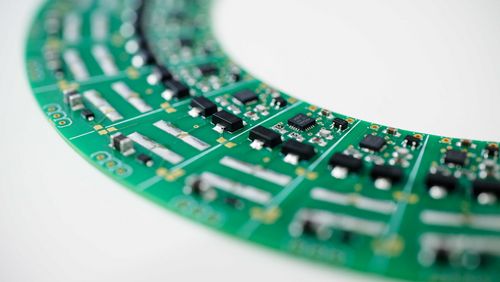
An artificial muscle for a real smile
Surgeries to remedy facial paralysis are highly complex and require a great deal of skill. The artificial muscle developed by a WSS-funded research team at the EPFL campus in Neuchâtel represents a potential way to simplify these operations.
Our faces are our calling cards: the expressions and features on a person’s face help us draw conclusions about their personality, their mood—even whether we find them likeable. Without these unspoken signals, communication between individuals is almost unthinkable. After all, it’s not only what is said, but how it’s said: the way a person’s eyes blink, how they wrinkle their nose or smile at us.
But some people have lost the ability to smile. Not because of grief or depression, but quite literally—due to facial paralysis. Various factors can cause this condition: the loss of facial function can be due to an accident, a tumour or infection, or a congenital defect might be the underlying cause. In many cases, paralysis is restricted to the side of the face where the facial nerve has been damaged.
The treatment chosen depends on the cause and the level of dysfunction. If facial paralysis is permanent and disfiguring, or if it diminishes a person’s life quality, specialists will consider a surgical intervention, as facial disfigurements can be so distressing that patients withdraw completely from society. In cases of paralysis on one side of the face, surgeons generally transplant a nerve from the healthy side to the paralysed side.
In some cases, however, nerve transplantation isn’t enough. If the facial muscles have atrophied or been otherwise negatively impacted, they too must be replaced. In such cases, plastic surgeons generally remove part of a thigh muscle and transplant it in the patient’s cheek. These operations are lengthy and difficult, and follow-up surgeries are often necessary. In addition, there’s an inherent risk of complications in the leg where muscle tissue was removed.
An incredibly elastic material
Now, researchers at the Center for Artificial Muscles (CAM) at the École polytechnique fédérale de Lausanne’s Neuchâtel campus—which receives funding from the Werner Siemens Foundation—are working on an alternative. Together with specialists at the Department of Plastic Surgery and Hand Surgery at the University Hospital Zurich, they want to construct an artificial muscle that can be transplanted in patients with facial paralysis.
To realise their goal, the team led by CAM director Yves Perriard and managing director Yoan Civet are working with novel, extremely elastic materials known as dielectric elastomer actuators, which consist of layers of a highly elastic plastic (the elastomer) and electrodes. If voltage is applied to the electrodes, an electric field arises between them. Depending on how much voltage is applied, the elastomer expands or contracts. The researchers are using the same material as in the muscle-like ring they developed to fit around the aorta in patients with cardiac insufficiency to boost the heart’s pumping capacity.

Lightning-fast transmission
In contrast to the original, ring-shaped elastomer actuator, however, the new artificial muscle is flat. “It will be inserted into the patient’s cheek, with the upper part attached to the bone and the lower part connected to the skin near the mouth,” Yoan Civet explains. Recently, the researchers published their first study on the new system. “The idea was to test the signal transmission from the nerve to our artificial muscle.”
They used electrodes to link various prototypes of their artificial muscle to one of the “smile muscles” in the face of a healthy test subject. The test subject was then instructed to say the word “Hello”, and the researchers then measured how much the muscle elongated—and how fast the signal to move was transmitted. The result: it took only a few dozen milliseconds for the muscle to get the message. “In other words, transmission is fast. And that’s important,” Civet says.
Since publishing the study, the researchers have conducted additional experiments in their lab using a model developed by Stefania Konstantinidi, a PhD student in the group. In the model, the artificial muscle system is set in motion directly on the skull and connected to the muscle on the intact side of the face—as is the case in real operations. “The bones and other factors create a lot of friction,” Yves Perriard says, “which is why the plasticity of the artificial muscle is still not good enough.”

Improve and test
The researchers also want to make improvements on the general construction of the artificial muscle. In the current model, the dielectric elastomer actuators elongate when a voltage is applied, but natural muscles do precisely the opposite: they’re longer when at rest, and shorter when tensed or activated.
That’s why, in its present state, the artificial muscle would need a constant supply of energy to remain immobile. “Although that’s a possibility, we’re working on an alternative,” Civet says. By inserting a specific kind of fibre into their elastomer actuator, the researchers are aiming to reverse the artificial muscle’s reactions, making it contract when activated instead of expanding.
Once they’ve perfected the tweaks to the system, the researchers are looking to conduct the first in vivo experiments on rats. The project is progressing very well, and if all goes according to plan, the artificial muscles from Neuchâtel will—perhaps one day soon—put a smile on people’s faces.
> Link to article








